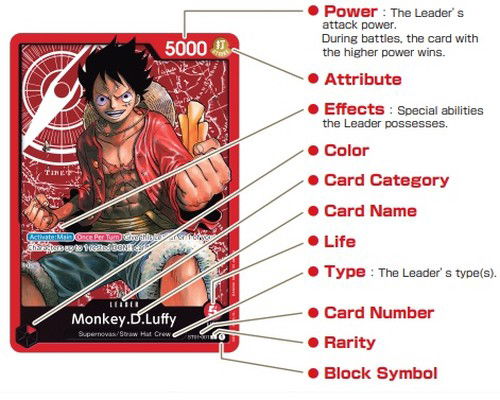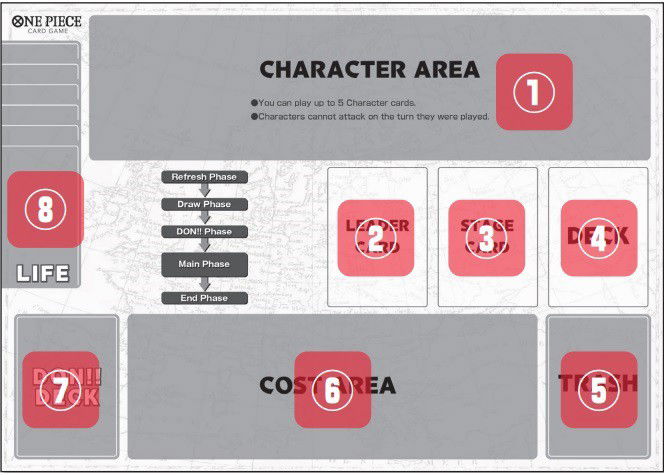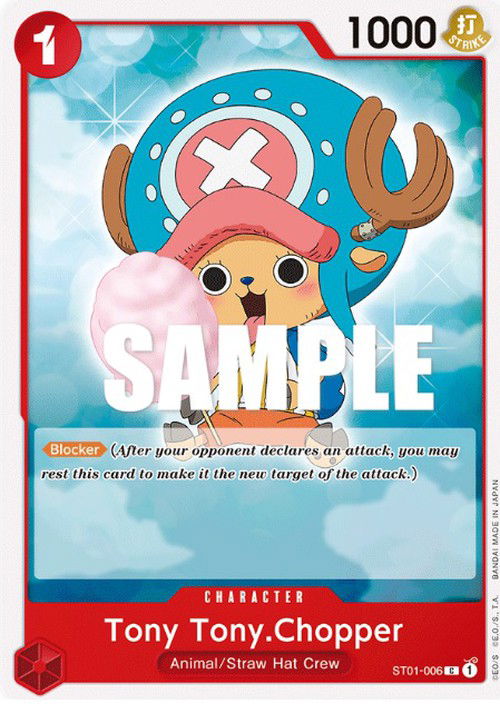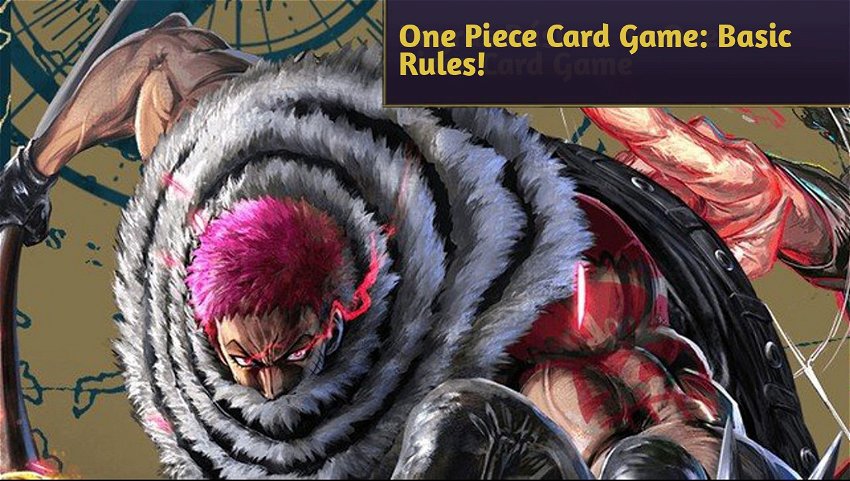Introduction
The One Piece card game has docked in many places and, as there are no plans of it being translated to all the languages of the countries it is in, we have prepared this brief manual, so you can get to know the game a little bit better!
Its premise is very similar to the other card games, and it even comes close to Magic's Commander and Brawl decks: you create a deck around a Leader. The difference is, to win, you'll have to reduce the opponent's Leader's Life to 0, or make them draw every card in their deck.
That is right, when drawing the last card in your deck, the player loses the match.
Matches tend to be faster than a Magic or Pokémon match, so, in case you want a fun card game which can be played with your friends, this will be a great option.
Let's get to know the basics of the game:
The Cards and the Deck
The game counts with the following types of card: Leader, Character, Event, Stage and Don!!.

Each deck in the game must be built following this exact proportion:
1 Leader.
50 Cards between Characters, Events and Stages (being at most 4 copies of each card).
10 DON!!.
As in Magic, the One Piece cards have colors, and your deck must follow the same colors of the Leader you've chosen. There are some cards which have two colors, which allow for a more complex deckbuilding than those cards with only one color. Example:

The information present on each card is as follows:

Remember the "Don!!" cards? They are used to pay the necessary costs to put into play a Character, Event or Stage card. Unlike other games, Don!! cards will stay in a separate pile from the rest of your deck, and you'll draw a card at the start of each game round.
Remember that the cost to be paid to activate each card will be in the top-left corner, in a circle, which varies in color according to the identity of each card: red, green, purple, yellow or blue.
Organizing the Game
The image below indicates how you should organize your game table:

1. Character Area.
2. Leader Card.
3. Stage Card (when active).
4. Deck.
5. Trash.
6. Cost Area: where you'll put the Don!! cards.
7. Don!! Deck!.
8. Life: where you'll place the number of cards equal to the amount of Life your deck's Leader has.
Match Phases
1. After placing your Don!! cards and Leader cards in their respective spots, each player draws 5 cards.
2. Each player checks their Leader's Life, and draws from the top of their deck the number of cards equal to the Life it has.
3. Decide through paper-rock-scissors who will start. The one who starts playing doesn't draw a card from their common deck and can't attack.
4. The next player follows the game flow: untapping cards, drawing a cad from their common deck and drawing a Don!! card. Keep in mind that at each turn the players must each draw a Don!! card.
5. Before declaring attacks, each player must activate Character, Event and Stage cards, paying their cost with Don!! cards.
6. Before declaring an attack, the player must use their leftover Don!! cards to activate effects, or increase the powers of their active Characters and Leaders.
Combat
1. Active Leaders and Characters can attack. First, untap the active Leader or Character that you want to use and declare your attack with. Next, choose the target of your attack. You can target the opponent's Leader or a tapped Character in the opponent's Character Area. Any effects that activate when your Leader or Character attack are activated at this point.
2. The player who was attacked can activate any card that is in play and has the Blocker effect to defend any card they want to. This option makes it easier to keep your important Leaders or Characters in play.

3. The player who was attacked can activate any card in their hand which has the Counter effect. These cards add power to your defense or trigger another effect. After the combat, this card must be discarded. In this phase, the defending player can activate Events which also have the Counter effect.

4. Damage: players compare the powers of each card involved in the combat. The card with the highest power, wins. In case the Leader has lost the combat, it takes one point of damage and its controller draws a card from their Life pile. Keep in mind that the game is over in case the Life card pile ends and the Leader performs a successful attack.
5. After resolving all effects that need resolving, discard the defeated or used cards in that combat, the turn is over and another begins.
Final Words
Do you have any other questions about these basic rules? Leave a comment down below, and we'll answer it!
See you later!












— Comments 0
, Reactions 1
Be the first to comment